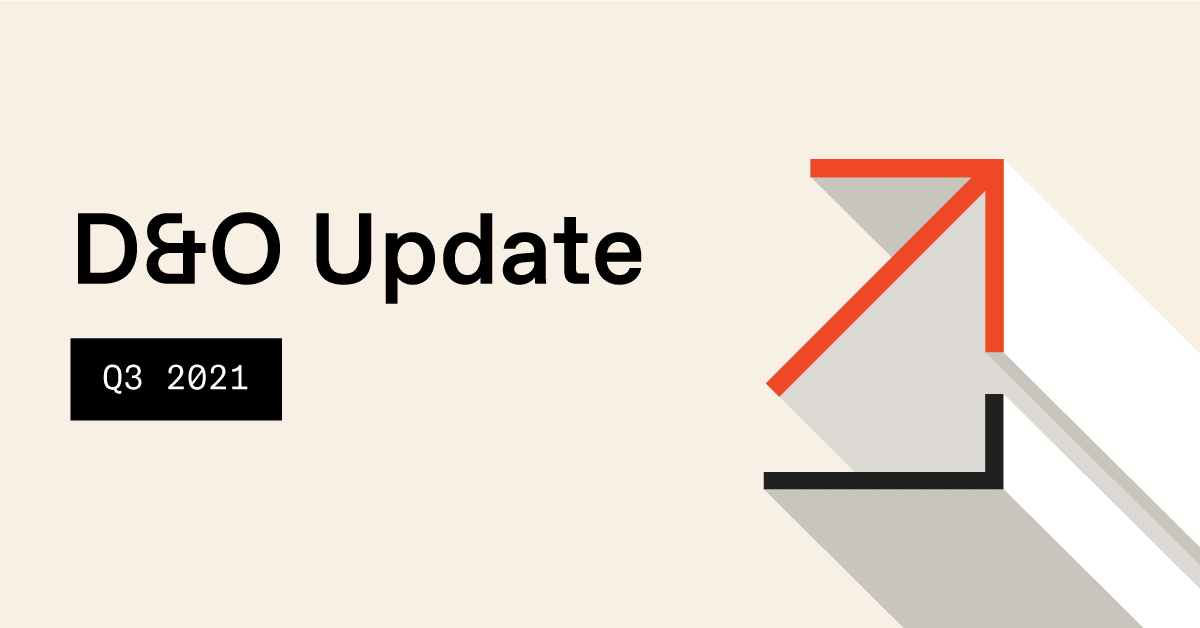Key Takeaways
As competition has gotten fiercer in the startup ecosystem in the past few years, insurance carriers and liability coverage have evolved to respond to the evolving risks, especially those involving executives and board members. Therefore, critical policies like directors and officers (D&O) are now more nuanced and specialized to cater to today’s complex demands, providing extra protection for executives. Today, their specificity matters more than you think.
Suppose a mismanagement event leads to a high-stakes lawsuit against one or more of your company leaders. Is your D&O coverage ready to shoulder the costs beyond excess to protect the personal losses of the executives involved?
While a standard ABC policy provides an important layer of protection, it often leaves critical gaps—particularly for individual directors who are most at risk.
To achieve true individual accountability and balance sheet protection for directors, organizations must look beyond a basic policy that might only provide excess coverage, understanding the indispensable role of a tailored Side A D&O insurance policy.
The Foundation: Deconstructing Your Standard D&O Insurance Policy
D&O insurance was first conceived with a focus on protecting company executives’ personal finances, and later evolved to include corporate indemnification. Nowadays, it offers a holistic approach to protect the leaders of public companies, private companies, for-profit businesses, and not-for-profit organizations, if legal fees or additional costs are incurred due to a lawsuit. These are the three common insuring agreements:
- Side A (Individual Coverage): This is the most personal form of insurance protection, providing coverage when the company is legally or financially unable to indemnify the executive involved and their personal assets.
- Side B (Corporate Reimbursement): This coverage reimburses the amounts the company indemnifies its directors—it’s the most common type of coverage.
- Side C (Securities Claims): Side C coverage protects the company’s balance sheet when named in a lawsuit, alongside an individual executive. It covers the costs and settlements incurred.
Although Side B has been the most popular coverage as of late, its primary focus remains on the company’s financial health, not the individual, as is also the case with Side C.
D&O insurance, at its core, was conceived to protect company executives and address management liability, ultimately making Side A a primordial agreement to include in your coverage.
D&O Insurance Benchmarking
The Essential Layer: Why Side A D&O Insurance is Non-Negotiable
The well-being of a company is inextricably tied to that of its leaders. In a competitive environment, such as the tech industry, this is even more relevant—leaders are the innovators who bring ideas forward and lift the company from the ground up. Side A D&O liability insurance coverage is arguably the best way to cover settlements and protect them, and therefore the company, when legal issues arise, becoming the ultimate backstop for executives.
In many cases, it’s also the only available protection for founders, board members, and other executives. For instance, when the company is bankrupt and cannot fulfill its indemnification obligations, it’s legally forbidden from indemnifying its directors (such as in a derivative suit), or it has the legal right to indemnify but lacks the cash flow to do so.
Whether due to corporate insolvency, non-indemnifiable claims, financial distress, or other outstanding reasons, Side A coverage fully safeguards leaders without affecting the company’s economic stability. To be more specific, it covers an executive’s legal and defense costs without being tied to the company’s financial status, especially when the underlying insurance policy fails.
In addition, Side A D&O can also include a Difference-in-Conditions (Side A DIC) policy, which kicks in when all else fails, especially if several lawsuits arrive at once. For example, if the main underlying policy is taking longer than expected to be disbursed, it’s drained, or wrongfully denied, DIC insurance acts as a safety net to cover these issues.
The Illusion of Security: Understanding Excess Coverage
Excess coverage is often marketed as a fundamental solution when the base layer of D&O coverage is exhausted. However, this isn’t the full picture, particularly when considering the impact of rising insurance premiums. Imagine you need more space in a housing project and, rather than adding a new building, you simply add more floors on top of the existing building above the underlying carrier. That’s Excess: simply adding more limits on top of the underlying policy.
Excess coverage provides additional limits for Sides B and C, but doesn’t solve the fundamental issue of individual accountability when the primary policy’s coverage is unavailable.
To further illustrate, defense costs can quickly erode the limits of the underlying policy, virtually leaving little or nothing for the Excess layer to cover. Plus, it usually follows the same terms and conditions as the primary policy, potentially making it subject to the same exclusions.
In the long run, Excess doesn’t necessarily work under specific circumstances that allow for special, more targeted coverage to kick in; instead, it’s an add-on to the regular D&O insurance that may include gaps in its policy.
Navigating Policy Exclusions and Intentional Wrongdoing
On top of coverage agreements like Sides A, B, and C, there can be certain claims specifically excluded that can leave your company stranded, even when you thought you were covered by your insurance policy.
This is when reading the fine print on your coverage before signing or renewing your policy matters most: spotting these nuances in your insurance program can make a massive difference when the going gets tough. Let’s take a look at some of the most common D&O exclusions:
- “Other” insurance: D&O concepts might collide with those in other coverages, in which cases a different policy would cover a claim. D&O covers executives when they’re exercising their actual business judgment or should be doing so, and other workplace situations might pertain to a different policy.
- Fines, penalties, and punitive damages: Insurance companies recognize that fines, penalties, and punitive damages have the specific intention to punish wrong behavior. Covering these costs would defeat the purpose and is therefore always excluded from coverage.
- Personal gain: Wrongful actions intended to gain undeserved benefits aren’t covered by any insurance policy.
- Catastrophic hazards: D&O excludes claims stemming from losses due to catastrophic hazards (war, environmental damage, nuclear events, or acts of terrorism), and could even include coverage carvebacks for shareholder claims.
“While some policies include retention, these sums can be negotiated so that startups can get a favorable arrangement, especially those in the tech/SaaS environment.”
—Matt Morella, Advisor, Founder Shield
It’s also worth noting that, although losses resulting from intentional wrongful acts or bad faith aren’t covered by D&O, a well-crafted policy—particularly a robust Side A policy—will often cover the defense costs until there is a final, non-appealable adjudication of the claim. This is why connecting with brokers and discussing nuanced terms can help your company land better policy terms.
Seeking True Protection With Side A D&O Coverage
D&O can offer broader coverage or get as specific as organizations demand of it, and it’s up to you to ensure that both your company and its leaders are truly protected when claims arise. Side A coverage—with its massive differences compared to Excess coverage—can be the most important component for protecting directors and officers, making for a more comprehensive safety net that emphasizes breadth instead of depth, while also considering entity coverage.
Being proactive about your company’s finances is just as much about revenue as it is about protecting key executives. This is why it isn’t enough to purchase a standard policy or excess layer that might cover the well-being of the company’s balance sheet without looking out for that of the individuals.
A dedicated D&O Side A policy is a fundamental component of a sound liability insurance and risk management strategy that addresses particular risks.
As your company grows and reaches new milestones, get in touch with an insurance and risk management professional who can review your current D&O policy and assess whether you have adequate Side A coverage—from experience, these conversations can improve your coverage and even save you money.









